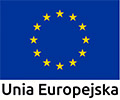Eddie Weinstein – Prisoner T2
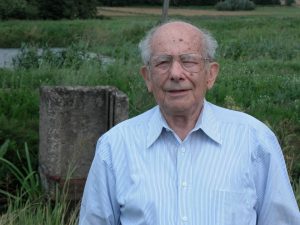
Eddie Weinstein (Jehuda Jakub Wajnsztajn) was born in 1924 in Łosice. After the attack on Poland and the capture of part of its territory, Germans in many cities formed closed and guarded centers of the Jewish population, the so-called ghettos (in Łosice it was established in 1941). Occupational authorities used free manpower from the conquered areas, creating numerous forced labor camps. Edi Weinstein worked in several such camps, but each time he managed to escape from them.
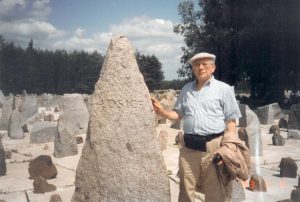
The Łosice ghetto was liquidated on August 22, 1942. That day Edi saw his mother for the last time. Inhabitants of the Jewish district were driven towards Siedlce, from where they were sent in cattle cars to the Treblinka II Death Camp. Weinstein arrived with his younger brother Izrael. They managed to avoid immediate death in the gas chambers because they were directed to clean up the corpses in the wagons and in the vicinity of the Treblinka railway station. On the same day Edi was shot by an SS man. His brother saved his life, who hid him wounded in a pile of clothes lying in one of the buildings in the camp. After a few days, Weinstein’s condition improved; however, his brother was probably shot at that time. Despite his weakening, he managed to infiltrate the commando working on segregating Jewish property. During his stay in the camp, he was directed to the group sentenced to death several times during the selection, but he managed to save his life.
[…] Two guards came, who chose me and others, a total of 40 people. One of the guards told us to stand next to him and form a column. When the selected group carried out the order, I slipped away and joined those who were left out of the selection. I still don’t know what made me do it. Those 40 were led towards the bottom […] they were shot.
Eddie Weinstein, 17 dni w Treblince, Towarzystwo Przyjaciół Ziemi Łosickiej, Łosice 2012.
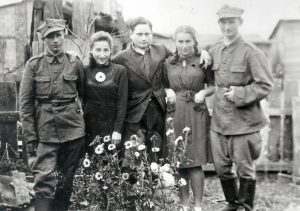
One day, a group of prisoners in which he worked were directed to load the wagons standing on the ramp of the carriages with the items left behind by the murdered. Weinstein took advantage of this moment. He managed to hide in one of the wagons, from which he later jumped out. He found his father and they returned to Łosice, where the occupation authorities created the so-called residual ghetto. Before its liquidation, they both left and hid with a Polish family. When they refused further help, they found rescue with Gabriel Szczebuński – an old friend. Helena Biernacka also helped them. After the liberation, Weinstein joined the Polish Army, with which he reached Germany. There he married after the war. In 1949, he emigrated to the USA with his wife and father. His memories appeared in the book “17 days in Treblinka”. Edi Weinstein died in 2010 in the USA.
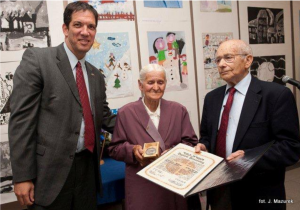
On June 30, 2010, Helena and Gabriel Szczebuński were posthumously honored with the title of Righteous Among the Nations.
Photos from the book: Edward Kopówka, ks. Paweł Rytel-Andrianik, Dam im imię na wieki. Polacy z okolic Treblinki ratujący Żydów, Oxford – Treblinka 2011, website: sprawiedliwi.org.pl, Rafał Zubkowicz archive in Treblinka Museum collection.
Translation: B.K.





